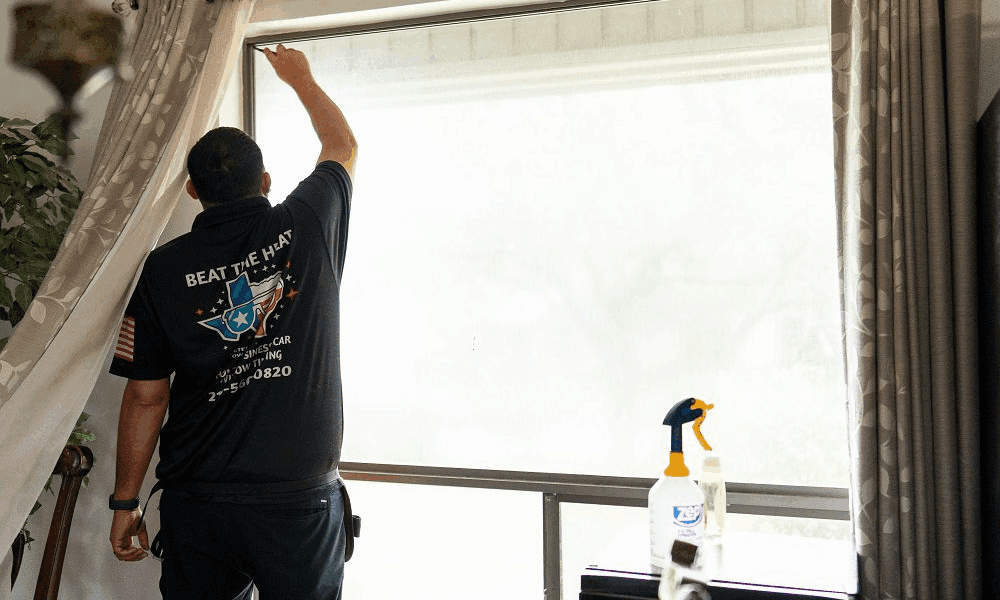How Home Window Tinting Can Save San Antonio Homeowners Money and Energy

My electric bill hit $380 last August. For a 1,800 square-foot house. That’s when I started looking into alternatives that didn’t involve running my AC at 78 degrees and sweating through the afternoon.
Turns out, residential window tinting isn’t just for fancy office buildings. After getting it installed and watching my next few bills, I’m kicking myself for not doing it years earlier. Here’s what I learned about how it actually works and whether it’s worth the cost.
The Math That Made Me Seriously Consider It
A local installer told me that windows are responsible for about 25-30% of heating and cooling costs in a typical San Antonio home.
Standard single-pane windows (which a lot of older San Antonio homes still have) are basically heat magnets. Even newer double-pane windows aren’t great at blocking heat—they’re designed more for insulation than reflection.
Home window tinting in San Antonio changes that equation. Quality film can reject up to 80% of solar heat before it even enters your house.
What My Actual Bills Looked Like
I’m not going to pretend I tracked every detail scientifically, but I can show you real numbers. My average summer electric bill before tinting was around $340-380. After getting the film installed in April (before the real heat hit), my bills that summer ranged from $240-290.
That’s roughly $80-100 per month in savings during peak season. Over a full year, accounting for the milder months where the difference is less dramatic, I’m saving somewhere around $500-600 annually. The installation cost me about $2,100 for the whole house, which means it’ll pay for itself in about four years.
Your mileage will vary depending on your home’s size, how many windows you have, and which direction they face. But even if you save half what I did, that’s still meaningful money over time.
It’s Not Just About Summer
Everyone focuses on cooling costs because that’s where San Antonio homeowners bleed money. But residential window tinting actually helps in winter too, though not as dramatically.
The film adds an extra layer of insulation. It’s not huge—maybe 5-10% improvement in heat retention—but it’s something. My January and February bills were slightly lower than previous years. Not enough to write home about, but I’ll take it.
The bigger winter benefit is comfort. Those cold mornings when sun streams through your windows? It’s nice, but it also creates hot spots in certain rooms while others stay cold. Your HVAC system ends up fighting itself. Home window tinting San Antonio helps even out the temperature distribution, so you’re not constantly adjusting the thermostat.
The Furniture Thing Nobody Talks About
This wasn’t on my radar at all when I got window tinting services, but it’s become one of my favorite unexpected benefits. We had a leather couch positioned near a big south-facing window. Over three years, one armrest faded from dark brown to this weird tan color. The cushions facing the window lost their richness too.
I didn’t connect it to sun damage until the installer pointed out the UV exposure those windows were getting. Apparently, UV rays are what fade fabrics, damage wood finishes, and even cause artwork to lose color over time.
Home window tinting blocks about 99% of UV radiation. Since installation, I’ve moved some things back near windows without worrying about them getting destroyed. My wife has plants on the windowsill now that would’ve gotten scorched before. It sounds minor until you consider replacing a $2,000 couch or refinishing hardwood floors that have sun-bleached in patches.
Glare Was Driving Me Insane
I work from home three days a week, and my desk faces a window. Before tinting, I’d have to close the blinds by 2 PM because the glare on my monitor made it impossible to see anything. Then I’d sit in a cave for the rest of the afternoon with artificial lights on.
After getting the windows done, I can actually leave the blinds open all day. The film cuts the glare enough that my screen stays visible, but I still get natural light. It’s a quality-of-life thing that’s hard to quantify, but it matters.
Privacy Without Living in a Dungeon
Our house is on a corner lot with big windows facing the street. Great for curb appeal, less great for feeling like you’re in a fishbowl. Before tinting, we kept blinds closed in the front rooms basically all the time.
Now, during daylight hours, it’s been fantastic. We actually use our front rooms now instead of living in the back of the house.
Installation Was Easier Than I Expected
I thought this would be a multi-day disaster with workers tearing apart my house. It wasn’t. Two guys showed up at 8 AM and were done by 3 PM. They did 14 windows total—mostly large ones.
The process is pretty straightforward. They clean the windows thoroughly, cut the film to size, apply it with some soapy water solution, and squeegee out the bubbles. Then they trim the edges and clean up. My house wasn’t a mess, and we could use the rooms the same day.
Does Everyone Need This?
I’ve recommended it to probably a dozen people since getting mine done. Most of them dragged their feet because it seemed expensive upfront. The ones who finally pulled the trigger have all told me the same thing: they wish they’d done it sooner.
Your house stays cooler, your bills go down, your stuff doesn’t get destroyed, and you can actually enjoy your windows instead of treating them like liabilities. That’s pretty much the whole pitch — and if you’re considering it, check out Beat the Heat Window Tinting for reliable installation and top-quality films in San Antonio.

Source: How Home Window Tinting Can Save San Antonio Homeowners Money and Energy




